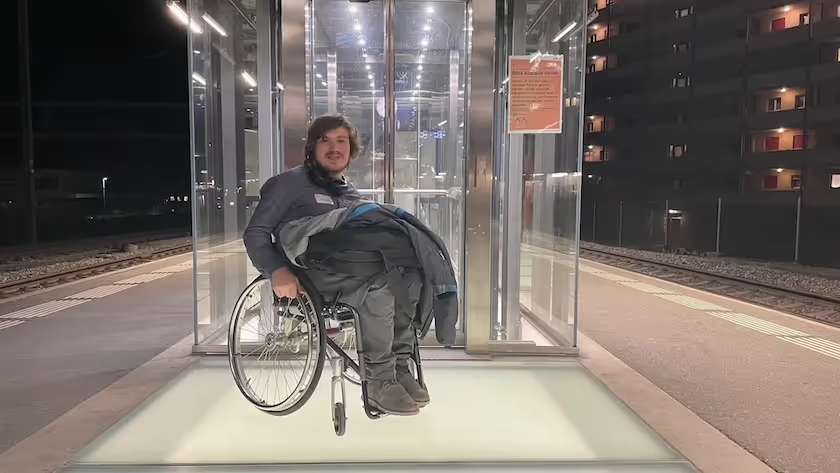Travel in public transport
Oliver Maridor works for the Swiss Blind and Visually Impaired Association sbv as a dossier responsible for public transport. Being able to travel alone by bus and train is self-employed. Oliver explains why information about travel planning is important for people with visual disabilities.
Accessibility starts with planning
Olivier often travels by public transport. He says: “When I drive to work, I know the route inside and out. But when faced with unfamiliar paths, preparation becomes key.” Olivier highlights the importance of preparing for a trip: “I browse the Internet for timetables, search for routes in apps, or make a call. The SBB website is my first point of contact.” And even during preparation, Olivier believes that everything must be consistently barrier-free — from online research to buying tickets in the app.” This is called the so-called management chain. For example, if an alternative text that is important to me is missing from an image on a website, the screen reader cannot read out the information to me. In the worst case scenario, this means that I can't buy a ticket online, for example. At this moment, this missing alternative text is destroying my entire purchase process and I am back at the beginning. The lack of accessibility on the web can therefore hinder my trip just as much as an incorrect departure time.”


“For Olivier, public transport is a symbol of self-determination on its many routes.”

Make visible what is invisible to the visually impaired
Once the ticket is purchased, it's on to the bus stop. Olivier points out: “This is where it gets tricky. Where can I find the right train? Is there a timetable with voice output? A monitor at eye level would be brilliant. And information desks that can be reached quickly.” On the train, Olivier navigates with clear signs: “For example, I want to know where the toilet is on the train. And after going to the toilet, of course, where the sink and soap are. The existing relief and/or Braille lettering helps me here.”
After arriving, Olivier must first orient himself: “Where is the next step? Is the management chain still intact? Continuous information and help is important to me down to the very last place of travel. If I need a taxi after I arrive, for example, I need to know how to find it beforehand.”
Another challenge: “Transitions are tricky. From train to bus, bus to boat — it's complicated. Assistance is only available in a few train stations, and only on a voluntary basis. I think it would be extremely important that this offering be expanded.”
For Olivier, public transport is a symbol of self-determination on his many routes. At every stage of their journey, from preparation to transfers to the destination, it is clear that accessibility is not just a convenience, but a prerequisite for autonomy. “The management chain, from planning to arrival, is crucial not only in travel, but in every stage and activity of my life. A lack of information and accessibility is not just a hurdle — in the worst case scenario, it means that I simply can't get anywhere in the middle of the route.”









